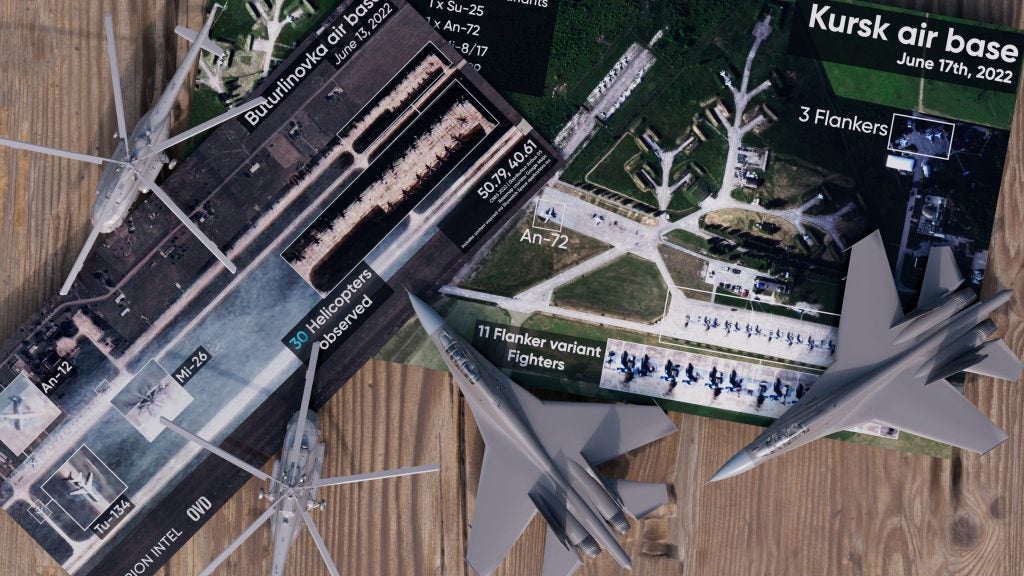Observing Russia’s Airpower in Ukraine
It has been four months since the start of the Russian invasion of Ukraine. It was preceded by a massive, months long build-up of personnel and equipment. Several air bases close to Ukraine were reinforced and witnessed heavy activity. In this piece we’ll examine the situation at some of the bases as the war continues.
Starting with Airbases near Eastern Ukraine, these air bases are at the forefront of Russia’s Air operations in the most active theatre of the war.
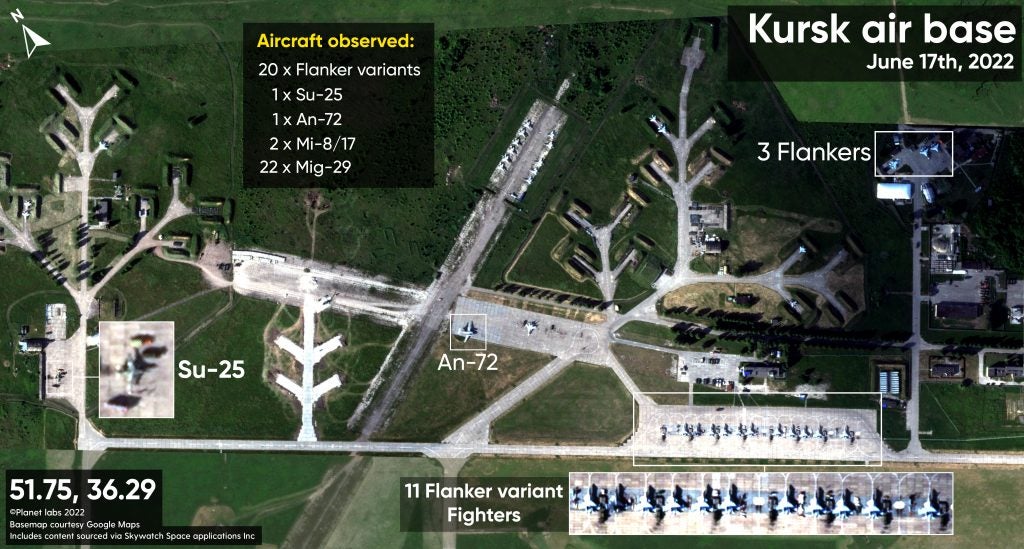
Imagery from 17 June for the air base located at Kursk shows the base having 22 Flanker variant fighters, this is more or less the same number of fighters seen in imagery from 25 March, possibly suggesting that they intend to maintain fighter numbers at this air base. This makes sense as Kursk is a frontline air base and the Flankers from this air base likely operate over Ukrainian skies, aiding Russian operations. Other aircraft present include an Su-25 and several helicopters.
Voronezh
Further east lies the airbase at Voronezh which has also seen significant fighter activity.
Activity at the air base in Voronezh has remained mostly constant, 30+ Flanker aircraft were seen at the air base in early with some other transport aircraft and aircraft activity has remained largely at the same level. Voronezh is an important air base with regards to the front in eastern Ukraine and has recently undergone a renovation.
Buturlinovka
While Kursk and Voronezh both mostly hold fighter aircraft, certain bases include a broader mix of fighters and helicopters. One such base lies south-east of Voronezh at Buturlinovka.
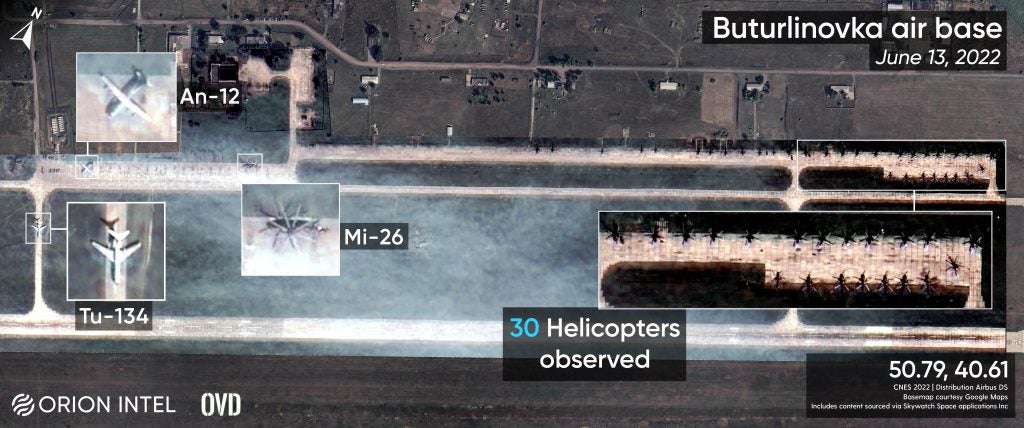
Buturlinovka is an air base located in Voronezh Oblast; 138km from the air base at Voronezh. Prior to the invasion the air base had hosted regular deployments of Flanker variant fighter aircraft including Su-30SM and Su-34. Satellite imagery from 13 June showed 30 helicopters present on base with most of them appearing to be Mi-8/17 helicopters. Imagery also showed the presence of a Tu-134, an An-12 and one Mi-26 helicopter. This suggests that this base is possibly being used for logistical resupply. Low resolution imagery for the base suggests that helicopters have been regularly deployed at the base since early April.
Millerovo
South of Buturlinovka lies another base holding both rotary and fixed wing assets, Millerovo. Millerovo is in the Millerovsky District in Rostov Oblast, just 35km from the Ukrainian border.
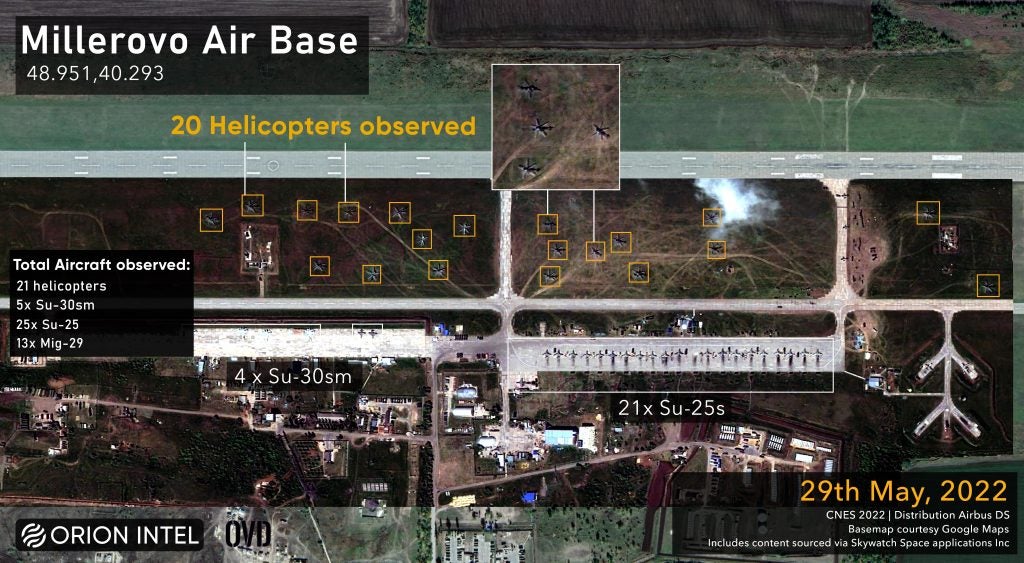
As I have covered in a previous article, Russia is using the air base located at Millerovo as a forward operating base to house helicopters. Imagery from 29 May showed 20 helicopters were present at the air base. The base used to hold Su-30SM fighters prior to the invasion but Su-25 fighters have now been observed operating from the base. The base is very important to Russia due to its strategic location being located very close to the border with Ukraine, making it an excellent choice to base assets in to support operations in Eastern Ukraine. The base’s importance can also be judged from the fact that it was attacked by Ukrainian Tochka missiles on 25 February 2022, the base likely remains an important target and possibly might again be targeted in the future.
Morozovsk
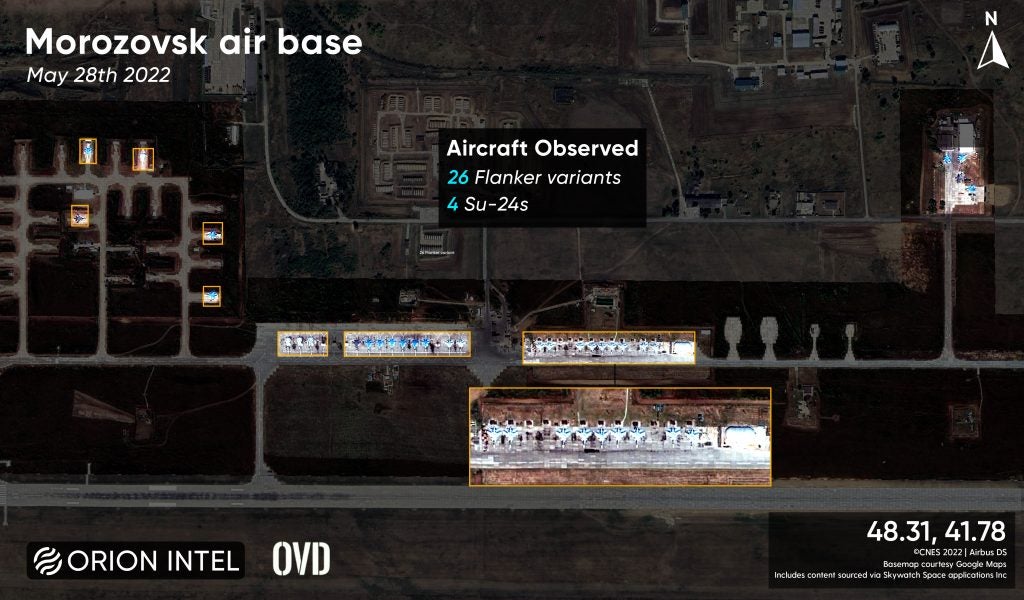
Morozovsk is another Russian air base close to eastern Ukraine. It lies 132km away from the air base at Millerovo, in the Rostov Oblast. Satellite imagery from 28 May shows 26 Flanker variant fighters and 4 Su-24 strike aircraft, which is not abnormal as they were also regularly seen at the base preceding the invasion.
Primorsko-Akhtarsk
Moving south near the Sea of Azov lies Primorsko-Akhtarsk.
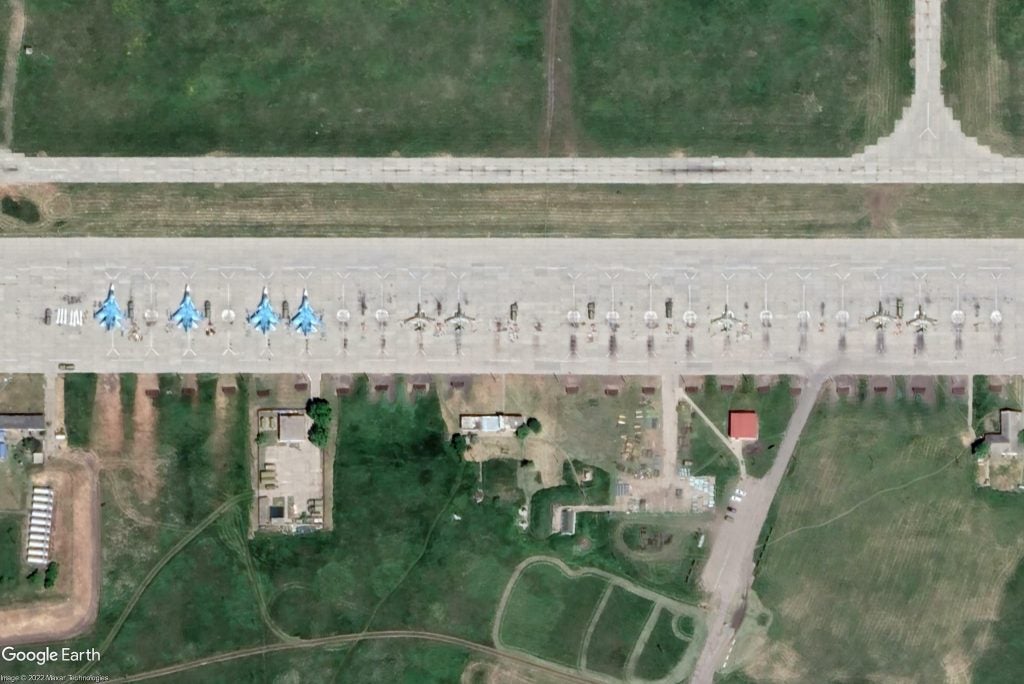
The air base is regularly seen holding Su-25s, Su-34s and other flanker series fighters in satellite imagery. The base’s location means that it is possibly used to support operations in Russia’s offensive in southern Ukraine.
Stary Oskol
While we’ve looked at air bases so far, a major component of Russia’s air operations are also heliports which are often located at airstrips or small staging grounds. One such base is Stary Oskol.
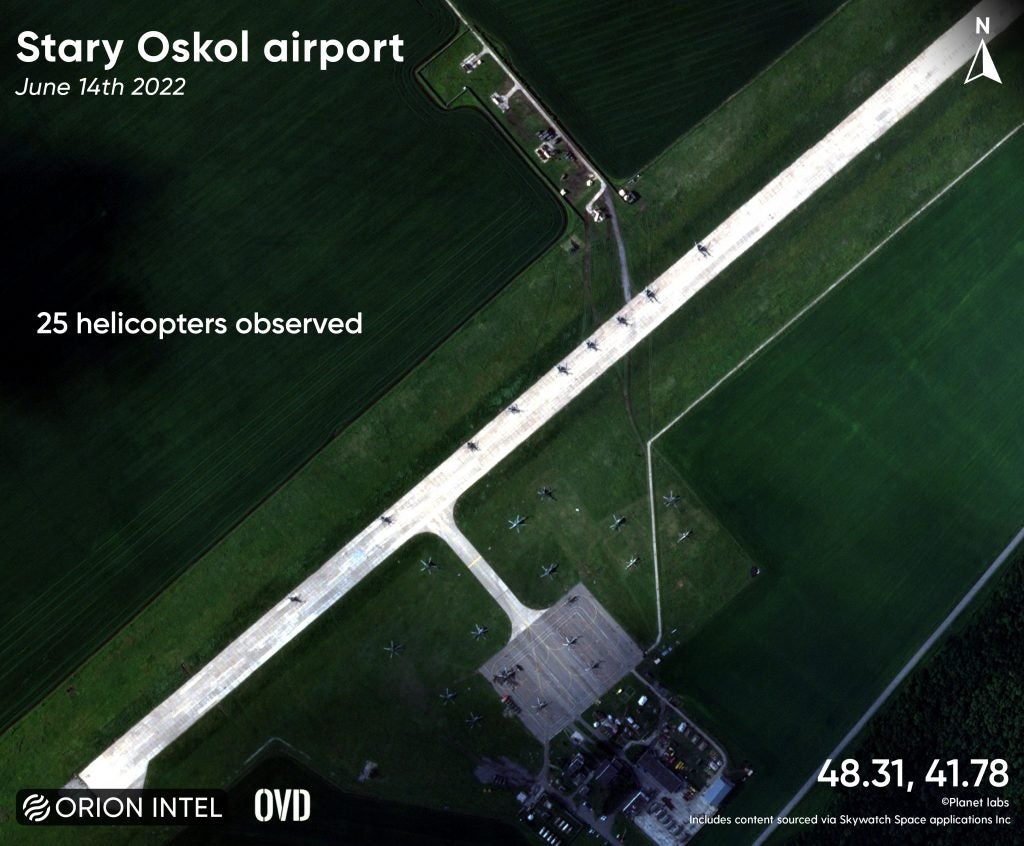
Satellite imagery from Planet Labs dated 14 June shows 25 helicopters present at Stary Oskol. Among the rotary wing assets seen in the imagery are Mi-8/17s, Ka-52s, Mi-24/35s and possibly Mi-28s. Low resolution imagery shows that helicopters on base were present since mid-march while deployments on base reached a peak in the month of April when the number of helicopters doubled to around 50 and continued till mid-May when they came down to the earlier number of 25.
To the south of the base at Stary Oskol lie two smaller bases; Valyuki and Belgorod.
Valyuki
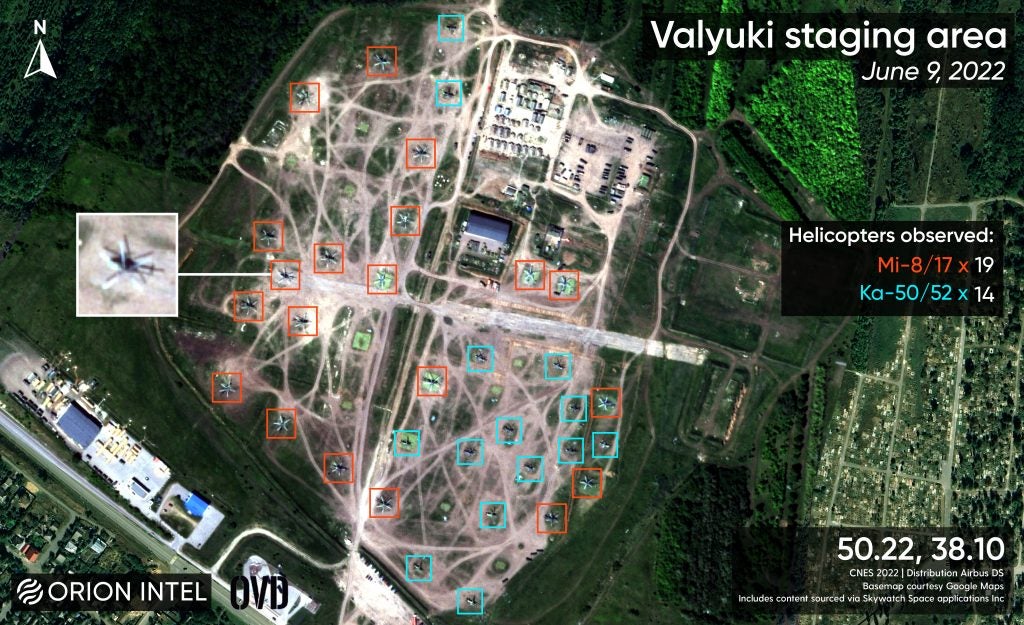
Valyuki is one of Russia’s Forward Operating Bases (FOB) that has seen constant activity since the massive Russian build-up preceding the invasion of 24 February, The FOB is located at a distance of 24kms from the border with Ukraine. Satellite imagery for this base from 9 June shows the presence of 17 Mi-8/17 helicopters and what look like 14 Mi-8/17 helicopters, also seen are what look like 14 Ka-50/52 helicopters.
Belgorod
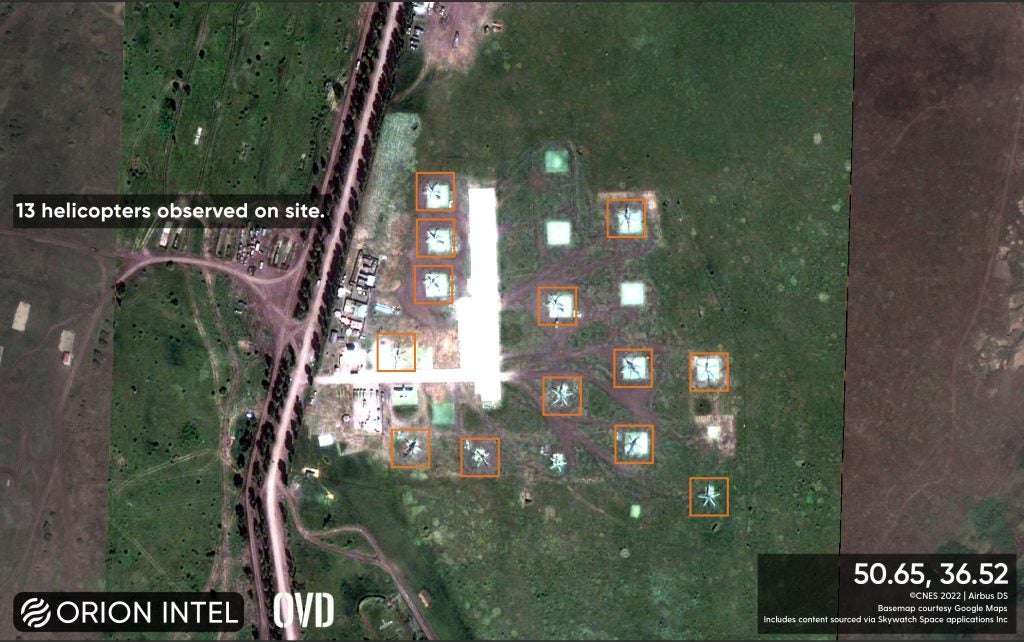
The heliport near Belgorod is another base likely acting as an FOB for Russian helicopters, The base was active in the buildup prior to the invasion of Ukraine and has regularly seen helicopters on site since then. The utility of this base increases as it also lies in close proximity to a Russian Field hospital which is likely being used to treat wounded Russian soldiers.
The bases of Valyuki and Belgorod are located 123kms from each other and helicopters from both the bases are being used in operations in Eastern Ukraine, possibly in areas like Lyman and Sieverodonetsk.
Dzhankoi
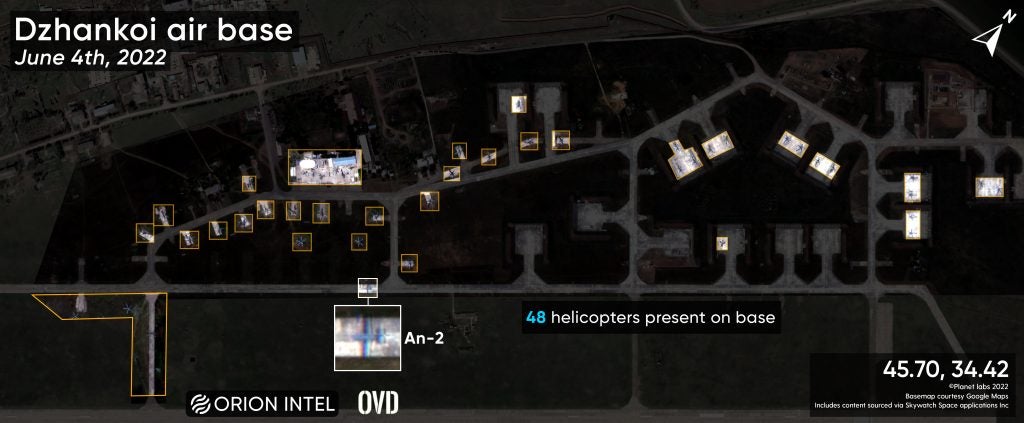
Located near the front in Southern Ukraine, the Russian air base of Dzhankoi is the northernmost air base on the Crimean Peninsula. It was a Ukrainian air force reserve base prior to being taken over by Russia during the invasion of Crimea in 2014. The air base is now the home of the 39th Helicopter regiment housing Ka-52, Mi-28, Mi-35 and Mi-8 helicopters. An S-400 Battalion is also located close to the base. Imagery from 9 June shows 48 helicopters were present on base; this is not unusual as the total squadron strength at the base should be about 50 helicopters. However, this does show Russia’s intention to maintain high numbers of helicopters at this base. The base may possibly act as a support base for smaller FOBs inside southern Ukraine.
Chaplynka
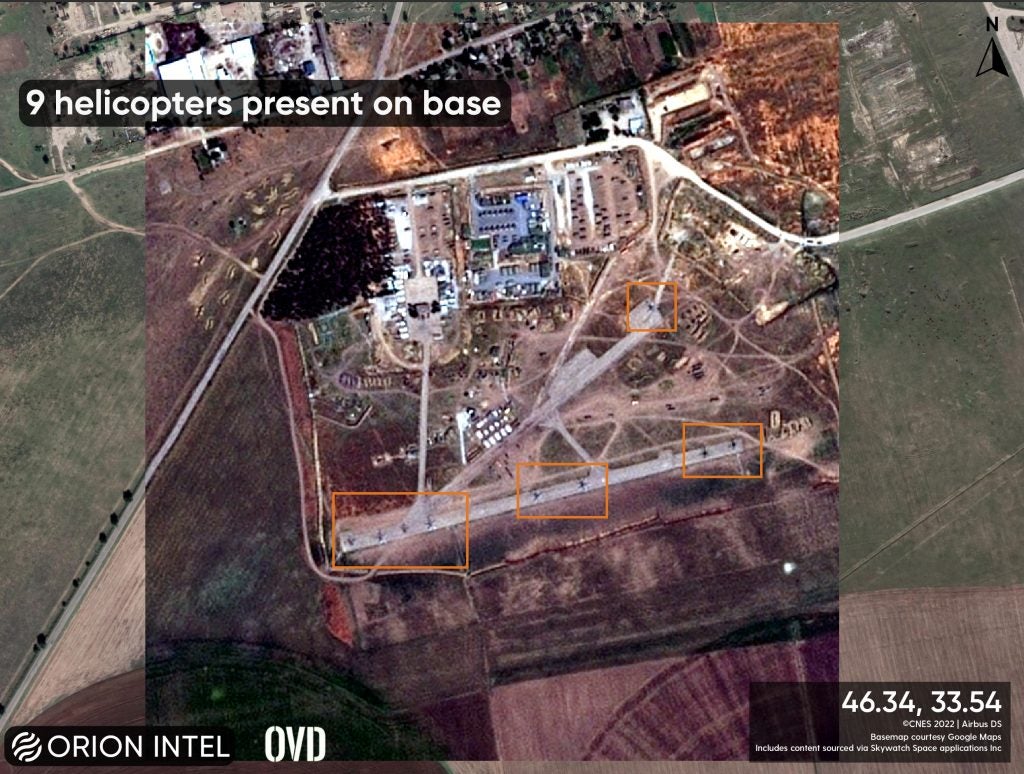
Chaplynka is one of those FOBs located inside Ukrainian territory. Satellite imagery from 17 June showed 9 helicopters present at the base along with tents and vehicles. The location of the base, which is 15km inside Ukraine, extends the combat radius of the helicopters operating out of Dzhankoi and enables them to operate closer the frontlines in south-western Ukraine.
Activity at air bases like Kacha, Saki and those on the Crimean Peninsula were not particularly noteworthy.
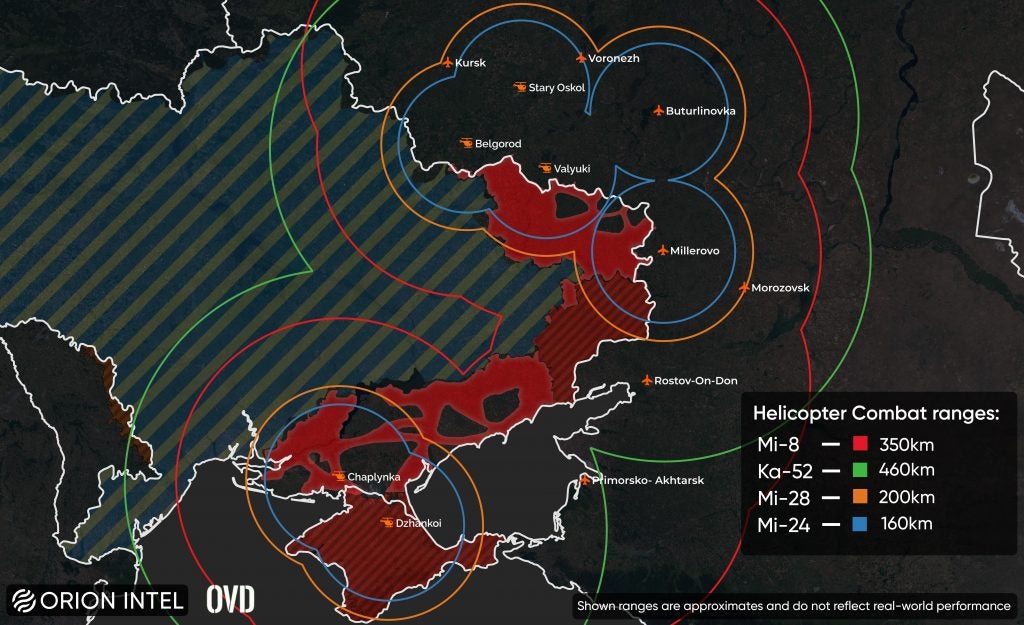
This heavy use of helicopters across the two Russian fronts makes sense as many of these helicopters, like the Mi-8/17, are multipurpose helicopters and can be used for reconnaissance and medevac missions. These helicopters are also likely being used to provide logistical support to Russian operations in ferrying troops, ammunition, and other supplies to the frontlines. This would make sense given reports of Russia having trouble maintaining their supply lines during the initial days of the war.
The bases covered in this piece are in my opinion noteworthy and worth examination. There are more bases holding Russian forces that are not covered in this article. Another thing to keep in mind which I’ve not covered in detail here is that air defense units are also a key part of Russia’s defence strategy and these units combined with fighter aircraft is likely how Russia plans to achieve air superiority in Ukrainian skies. It will be interesting to see how the war in Ukraine progresses with regards to air power.
Thanks to @COUPSURE for finding and helping me with many of these bases.
Thanks to Adithya, Amy and Gerjon for their contributions to this piece!

